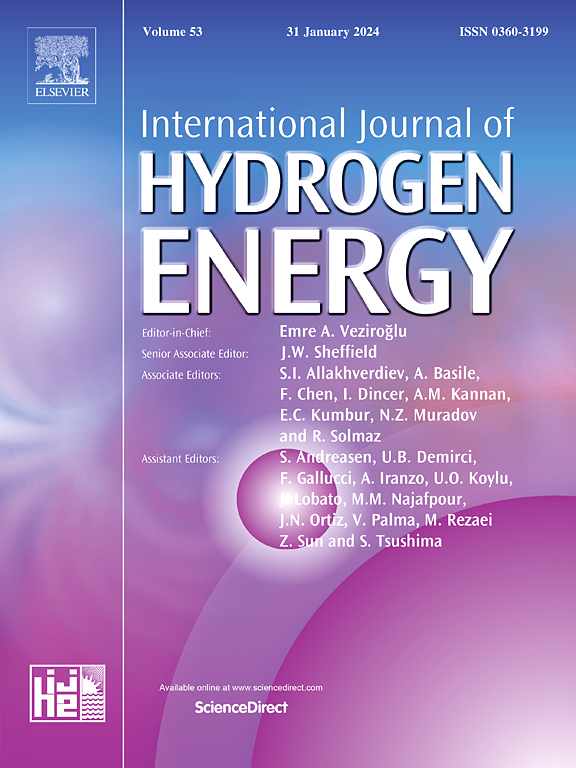Enhancing heavy duty vehicle hydrogen refueling by alternative approach to SAE J2601/2 protocol and flow dynamics
IF 8.1
2区 工程技术
Q1 CHEMISTRY, PHYSICAL
引用次数: 0
Abstract
This paper analyzes the hydrogen refueling process for heavy-duty vehicles according to the SAE J2601/2 protocol. Attention is paid to two key aspects of the protocol that affect the refueling process: treatment of the storage system from a thermodynamic and geometric point of view and the maximum deliverable flow rate of the station in the refueling process. The effect of the ratio of the inner diameter to the inner length of the total volume on the refueling process was then analyzed, and it was shown how far the new approach results deviate from the results obtained by applying the SAE protocol. A total supply of 28 kg was simulated but with three different configurations: 14∗2 kg tanks, 7∗4 kg tanks, and 4∗7 kg tanks. When analyzing the effect of varying the ratio of inner diameter to inner length, it was noted that in the most conservative case, there is an overestimation in terms of final temperature for the three configurations of about: 2.1 °C, 1.4 °C and 1.1 °C, respectively. This aspect has a significant impact on the refueling time, which could be reduced by about 9.9% in the first case and about 7.1% and 5.4% in the other two. In addition, refueling using the multi-tank approach was simulated for some case studies assimilated to heavy vehicles currently on the market in terms of the amount of hydrogen stored. These refuelings were carried out with stations capable of delivering a maximum flow rate of 120 g/s, 180 g/s, and 240 g/s. It is inferred that increasing the flow rate from 120 g/s to 180 g/s results in time savings for the three cases of: 35%, 34% and 37%. On the other hand, running up to 240 g/s results in time savings of: 54%, 52% and 55%.

求助全文
约1分钟内获得全文
求助全文
来源期刊

International Journal of Hydrogen Energy
工程技术-环境科学
CiteScore
13.50
自引率
25.00%
发文量
3502
审稿时长
60 days
期刊介绍:
The objective of the International Journal of Hydrogen Energy is to facilitate the exchange of new ideas, technological advancements, and research findings in the field of Hydrogen Energy among scientists and engineers worldwide. This journal showcases original research, both analytical and experimental, covering various aspects of Hydrogen Energy. These include production, storage, transmission, utilization, enabling technologies, environmental impact, economic considerations, and global perspectives on hydrogen and its carriers such as NH3, CH4, alcohols, etc.
The utilization aspect encompasses various methods such as thermochemical (combustion), photochemical, electrochemical (fuel cells), and nuclear conversion of hydrogen, hydrogen isotopes, and hydrogen carriers into thermal, mechanical, and electrical energies. The applications of these energies can be found in transportation (including aerospace), industrial, commercial, and residential sectors.
 求助内容:
求助内容: 应助结果提醒方式:
应助结果提醒方式:


